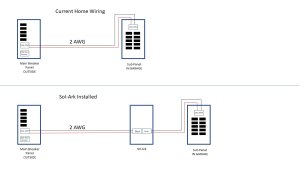That can be partly supported by frequency shift of battery inverters controlling AC coupled PV. When they want less power they raise the frequency.
A load that observes frequency increasing to start consuming more, before frequency reaches the point where PV production starts to be curtailed.
This could cool the house, pump water, or charge EV but only with surplus power; it wouldn't also consume power stored in battery to maintain comfort or achieve your commute range requirement.
Battery knows SoC and SCC knows PV curtailment. Inverter, if aware of battery SoC and charge current needs, could use frequency decrease as well as increase to request less/more consumption and if necessary curtailment.
A battery SoC monitor (or box communicating/evesdropping on BMS data link) could implement the control algorithm, allowing cooling and other functions while maintaining a desired amount of reserve stored watt-hours.
Internet/WiFi connectivity would be another way, since some appliances already have that.




